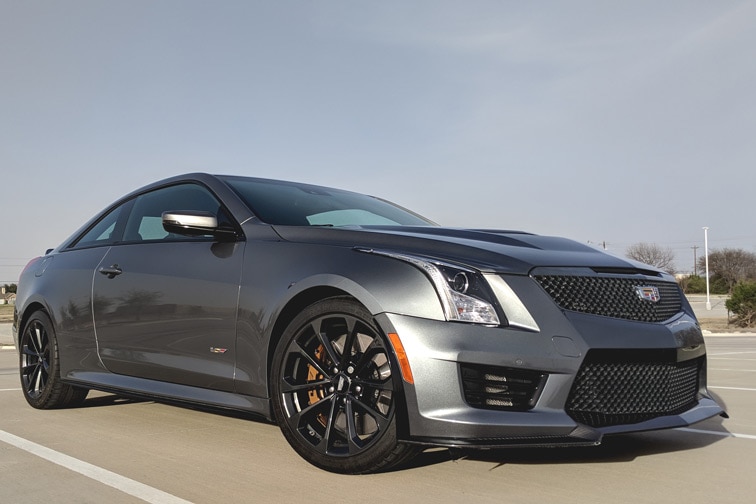2019 Cadillac ATS-V vs XT4 Review: The Evolution of Luxury
Pitting a high-performance coupe against a high-tech crossover results in some interesting findings.
 Aaron Miller/Capital One
Aaron Miller/Capital One
On paper, the 2019 Cadillac XT4 and ATS-V aren’t comparable vehicles. One is a small crossover SUV just entering its first year of production, the other’s a sports coupe in its last. One has a 236 hp turbocharged four cylinder designed to get up to an EPA-estimated 30 mpg, the other has a 464 hp, twin turbocharged V6 with an exhaust note that begs for attention. One coddles driver and occupants alike with massaging seats and offers a wide array of advanced driving aids designed for navigating rush-hour traffic, while the other is meant for weekend fun on back roads and race tracks, and shares much of its chassis with its corporate cousin Chevrolet Camaro.
Then, there’s the price differential: The XT4’s base is MSRP $34,795, and can climb as high as the $60,000s, while the ATS-V starts at MSRP $67,795 and runs into the $80,000 range.
So why compare them? Since the ATS-V’s introduction in 2016 as Cadillac’s answer to the BMW M3 and M4, it is virtually unchanged. Some of those who bought or leased one when it came out have since moved on to other vehicles. Translation: you can choose between a new ATS-V, or a pre-owned one that’s already gone through the worst of its depreciation.
What that means is that for roughly the same cost, you can buy a shiny new XT4 or a pre-owned ATS-V.
Deciding whether to buy a new vehicle or one that’s slightly used (but originally much more expensive) is a common dilemma. That’s why, when Cadillac tossed us the keys to an XT4 and an ATS-V for a week each to test out, we took it as an opportunity to investigate a question that will vary from person to person: with price no longer a factor, which offers more Cadillac for the money: the flashy high-performance coupe, or the brand-new luxury crossover that comes with the latest and greatest in advanced tech?
The answer, as it turns out, is entirely dependent on how you define luxury.
Written by humans.
Edited by humans.
 Aaron Miller
Aaron MillerAs a veteran automotive journalist, I have been fortunate enough to drive some of the most desirable cars on the planet and get to know some of the most important people in the industry. Before joining Capital One, I served as the Cars Editor for a major national website, and covered industry news and analysis for well-known automotive-specific sites. I also wrote feature articles and reviews for niche enthusiast websites. I’ve been obsessed with cars since—literally—before I can remember, with my collection of die-cast and slot cars taking center stage during my formative years. Simply put, for me, working isn’t really “work.”
Related articles
View more related articles